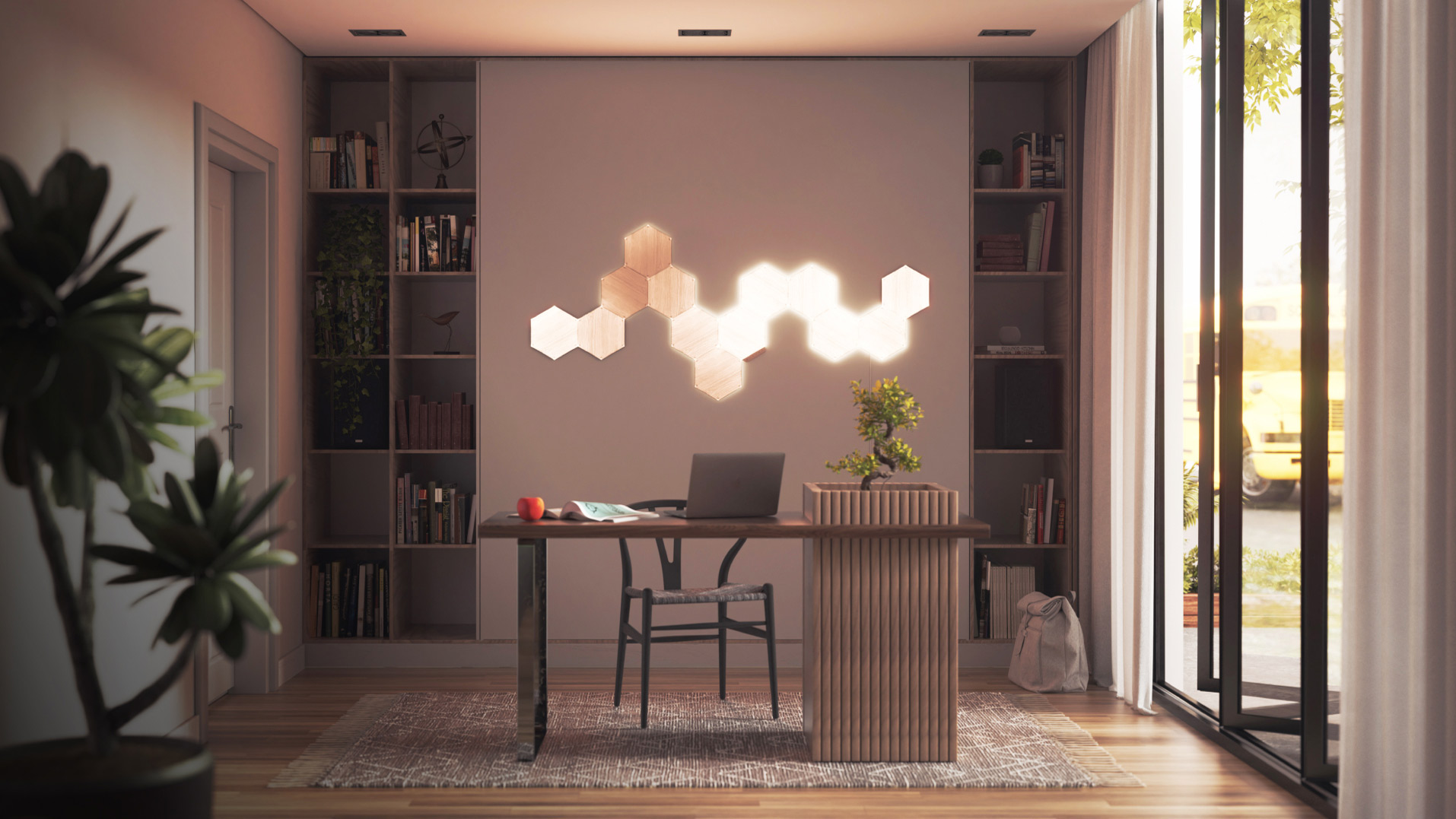This new Nanoleaf smart light feature puts an end to one of the biggest smart home struggles
Opinion: requiring a smart home hub to control devices away from home is an added frustration

A smart home is designed to make your life easier. If, after leaving your home, you’re worried that you forgot to turn the lights off, you can check on your phone, and if necessary turn them off from wherever you are.
Unless, that is, your smart home devices require a hub (sometimes known as a bridge) in order for you to be able to control them when you’re not close by. So you’d have to return home to switch your smart lights off, which means they’re just as well, dumb, as standard lights.
Smart home brand Nanoleaf, is looking to solve this problem by giving its Nanoleaf Shapes and Nanoleaf Elements light panels the ability to act as a Thread border router, enabling you to control compatible smart home devices even when you’re not close by.
The functionality will be delivered as an over-the-air firmware update to the Nanoleaf Controller. Bundled in the brand’s starter kits, the controller attaches to the light panels using the same plastic connectors that link the panels and lets you start, stop and switch the moving color effects these light panels emit. At any point, if the Controller isn’t connected to the light panels, the Thread border router functionality won’t be available.
- Discover if Matter will put an end to laggy smart home gadgets
- Find out why the Matter smart home system is delayed
- Here’s why Android and Nest devices will soon play nice with other smart home gear
Bringing smart home devices together
While this might not initially sound like a game-changing update, it’s worth considering that Thread is a wireless smart home standard that enables devices from different manufacturers to work together more effectively, and without the need for a smart home hub to enable them to talk to each other.
For example, if your smart weather center detects a cloudy dull day, it could turn your smart lights on automatically, even if they’re from different brands - that’s not something that’s been possible with smart home standards like Zigbee and Z-Wave.
Thread devices create a mesh network, where all of the devices connect to each other as well as Wi-Fi, which makes the internet connection stronger and more stable. So if one device has a weak or failing connection, the others will take over, strengthening its connection and putting an end to slow response times. The more Thread-enabled devices you install in your home, the bigger and stronger the mesh network gets.
Sign up for breaking news, reviews, opinion, top tech deals, and more.
Finally, if one of these Thread-enabled devices can act as a Thread border router, you’ll be able to ensure that you can run automations of several different devices when you’re not close by too - something that usually relies on a smart home hub to relay the command from your smartphone to the cloud and then onto your device.
That in itself is all great news from smart home device owners, but it's the fact that Nanoleaf is compatible with Android as well as Apple that really swings it for us. Until now, most of the devices that could double as a Thread border router were made by Apple, starting with the HomePod Mini, which was soon followed by the Apple TV 4K - this meant Thread and its stability was restricted to iPhone users, but that’s now no longer an issue.
Eero has also added Thread border router capability to some of its routers, and the Google Home Hub (2nd generation) and Google Nest Wi-Fi can also double as Thread border routers, although the functionality isn’t currently active. Here’s hoping other smart home hub manufacturers can implement similar technology relatively soon so that we can all benefit from smart homes that work seamlessly without the need for a smart home hub.
- Check out these great smart home device deals

Carrie-Ann Skinner was formerly Homes Editor at TechRadar, and has more than two decades of experience in both online and print journalism, with 13 years of that spent covering all-things tech. Carrie specializes in smart home devices such as smart plugs and smart lights, as well as large and small appliances including vacuum cleaners, air fryers, stand mixers, and coffee machines. Carrie is now a copy editor at PWC.